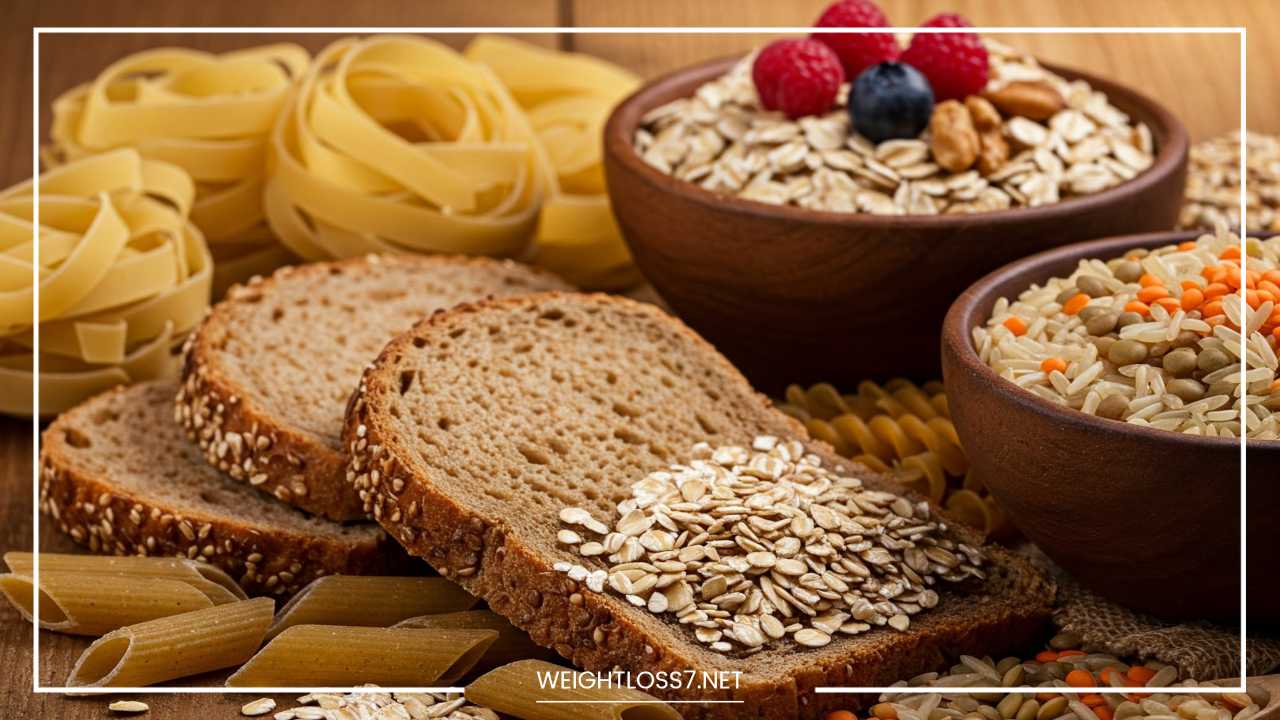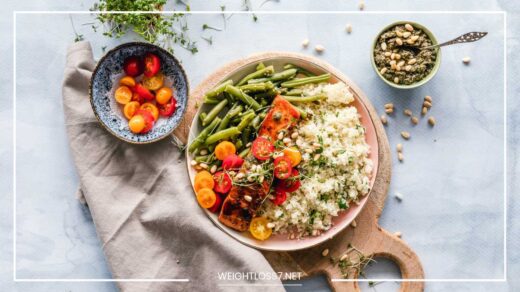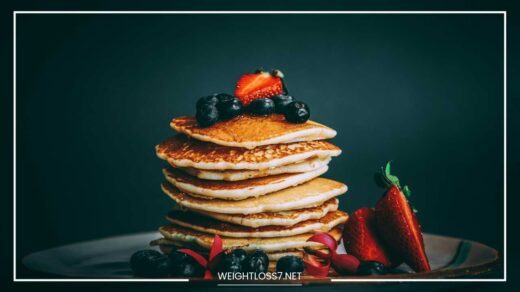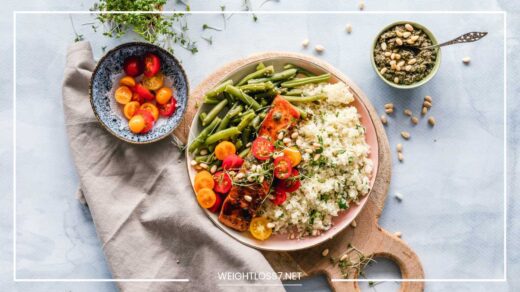Whole Grain Foods to Lose Weight

Whole Grain Foods
Whole Grain Foods for Weight Loss: A Nutritious Path to a Slimmer, Healthier You
Weight loss is a journey that involves much more than just reducing calorie intake. It requires a holistic approach that includes maintaining a balanced diet, engaging in regular physical activity, managing stress, and getting enough rest.
While there’s no one-size-fits-all approach to weight loss, making the right food choices plays a critical role in supporting your goals.
One of the most powerful tools in your weight loss arsenal is the incorporation of whole grains into your diet.
Whole grains are nutrient-dense foods that can help you feel full longer, stabilize your blood sugar levels, and provide a wide array of essential vitamins, minerals, and fiber.
Unlike refined grains, which have been stripped of their bran and germ during processing, whole grains retain their complete nutritional profile, making them far superior when it comes to supporting a healthy weight and overall well-being.
In this article, we’ll explore the science behind how whole grains contribute to weight loss, highlight the various types of whole grains you can enjoy, and offer practical tips on how to incorporate them into your daily meals.
With these strategies, you can build a sustainable, healthy eating plan that helps you lose weight, feel energized, and support your long-term health.
The Science Behind Whole Grains and Weight Loss
Understanding the science behind whole grains and their role in weight management is crucial to fully appreciating why they are such an essential part of a healthy diet.
Whole grains contain all three parts of the grain—the bran, germ, and endosperm—unlike refined grains, which are processed to remove the bran and germ.
This gives whole grains a significant advantage in terms of their nutrient density and health benefits.
1. Increased Satiety and Reduced Hunger
One of the primary reasons whole grains are effective for weight loss is their high fiber content. Fiber plays a crucial role in helping you feel full and satisfied after meals.
It adds bulk to your food, which can slow the digestive process, allowing you to stay full longer and reduce the likelihood of snacking between meals.
By keeping you feeling satiated for extended periods, fiber from whole grains can help you avoid overeating and control your calorie intake more effectively.
Furthermore, fiber has been shown to slow down the digestion of carbohydrates, leading to more stable blood sugar levels.
When your blood sugar is well-regulated, you are less likely to experience the energy crashes or cravings that often lead to unhealthy snacking.
This can be especially beneficial for individuals who struggle with mindless eating or “sugar cravings” throughout the day.
2. Improved Blood Sugar Regulation
Whole grains have a low to moderate glycemic index (GI), which means they cause a slower, more gradual increase in blood sugar levels when consumed, compared to refined grains.
This slow release of sugar into the bloodstream helps maintain steady energy levels and reduces the likelihood of blood sugar spikes and crashes, which can lead to increased hunger and cravings.
By stabilizing blood sugar, whole grains can make it easier to manage your appetite and avoid the urge to snack on high-calorie, processed foods.
For those with insulin resistance or those looking to manage their blood sugar levels, consuming whole grains is a smart choice.
Regular consumption of whole grains has been shown to improve insulin sensitivity, a key factor in weight management and the prevention of conditions such as type 2 diabetes.
3. Boosting Metabolism and Fat Burning
Eating whole grains may also help boost your metabolism and increase the number of calories your body burns at rest.
Some studies suggest that whole grains require more energy to digest than refined grains, due to their fiber content and more complex carbohydrate structure.
This process of digestion, called the thermic effect of food (TEF), can contribute to a slight increase in calorie expenditure, which can aid in weight loss.
Additionally, whole grains may promote fat burning by improving the body’s ability to oxidize fat during exercise.
This means that when combined with a regular exercise routine, whole grains could help your body burn more fat, potentially accelerating the fat loss process over time.
4. Lower Risk of Chronic Diseases
Whole grains offer far more than just weight management benefits. A diet rich in whole grains has been linked to a lower risk of developing chronic diseases, such as heart disease, type 2 diabetes, and certain types of cancer.
Whole grains are packed with antioxidants, phytochemicals, and anti-inflammatory compounds that protect the body from cellular damage and reduce the risk of disease.
In fact, research shows that individuals who consume more whole grains have a lower risk of heart disease, thanks to the high levels of heart-healthy fiber, antioxidants, and essential fatty acids found in these grains.
Whole grains can also help lower LDL cholesterol (the “bad” cholesterol), which is a significant risk factor for cardiovascular disease.
A Wide Variety of Whole Grains to Choose From
The world of whole grains is vast, and there are many different options to choose from, each with its own unique flavor profile and nutritional benefits.
Incorporating a variety of whole grains into your diet will ensure that you get a wide range of nutrients to support your overall health and weight loss goals.
Here are some popular whole grain options to consider:
1. Brown Rice
Brown rice is one of the most widely recognized whole grains. Unlike white rice, which is stripped of its bran and germ, brown rice retains these nutrient-dense components, making it a far healthier choice.
It is an excellent source of fiber, magnesium, selenium, and B vitamins. Brown rice is versatile and can be used in a variety of dishes, from stir-fries and salads to soups and grain bowls.
2. Quinoa
Quinoa is a gluten-free, ancient grain that has gained popularity due to its high nutritional value. It is considered a complete protein, meaning it contains all nine essential amino acids that the body cannot produce on its own.
This makes quinoa an excellent protein source for vegetarians and vegans. It is also rich in fiber, iron, magnesium, and antioxidants. Quinoa can be used in a variety of dishes, such as salads, stir-fries, and even desserts.
3. Oats
Oats are a breakfast staple that are well-known for their ability to support heart health and stabilize blood sugar levels.
They are particularly rich in soluble fiber, which has been shown to help lower cholesterol levels. Oats can be enjoyed as oatmeal, in smoothies, or even used as a base for baked goods like muffins and cookies.
4. Whole-Wheat Bread
Whole-wheat bread is a great alternative to refined white bread. Unlike white bread, which is made from refined flour, whole-wheat bread is made from whole wheat flour, which retains all of the wheat’s nutritional components.
Whole-wheat bread is a good source of fiber, B vitamins, and antioxidants. Look for varieties that contain at least 3 grams of fiber per slice to ensure you’re getting the most nutritional value.
5. Whole-Grain Pasta
Whole-grain pasta is an excellent alternative to traditional white pasta. It is made from whole wheat flour and contains more fiber, vitamins, and minerals.
Whole-grain pasta has a nutty flavor and is more filling than refined pasta, making it a great choice for weight loss.
It can be used in a variety of pasta dishes, including salads, baked pastas, and traditional Italian recipes.
6. Popcorn
Air-popped popcorn is a whole grain that makes for a delicious and healthy snack. Not only is popcorn low in calories, but it’s also high in fiber, which can help curb your appetite and keep you feeling full longer.
It’s a great alternative to processed snacks like chips and crackers, and it’s easy to make at home with minimal ingredients.
7. Barley
Barley is a versatile whole grain that can be used in a variety of dishes, such as soups, stews, salads, and even as a side dish.
Barley is rich in fiber, particularly beta-glucan, which has been shown to improve heart health by lowering cholesterol levels. It also contains essential vitamins and minerals, such as magnesium, phosphorus, and iron.
How to Incorporate Whole Grains into Your Daily Diet
Integrating whole grains into your meals doesn’t have to be difficult. With a little creativity, you can easily swap refined grains for their whole grain counterparts and enjoy a variety of delicious, nutritious meals.
Here are some practical tips for incorporating more whole grains into your diet:
1. Start Your Day with Whole Grains
Kick off your morning with a whole grain-based breakfast. Enjoy a bowl of oatmeal topped with fresh berries, nuts, and seeds, or opt for a slice of whole-wheat toast with avocado and scrambled eggs.
You can also try whole-grain waffles or pancakes for a fun, satisfying breakfast.
2. Swap Refined Grains for Whole Grains
One of the easiest ways to incorporate whole grains into your diet is to swap refined grains for whole grains.
Replace white rice with brown rice, white pasta with whole-grain pasta, and white bread with whole-wheat bread. You’ll still get the comfort foods you love, but with the added nutritional benefits of whole grains.
3. Add Whole Grains to Your Salads
Boost the fiber and protein content of your salads by adding whole grains such as quinoa, farro, or barley.
These grains provide a hearty texture and make your salad more filling, so you’ll feel satisfied for longer.
You can also use whole grains as a base for grain bowls, combining them with roasted vegetables, lean proteins, and healthy fats.
4. Snack on Whole Grains
Snacking doesn’t have to be unhealthy. Choose whole-grain snacks like air-popped popcorn, whole-grain crackers with hummus, or a handful of whole-grain cereal. These options are high in fiber and will help keep you feeling full between meals.
5. Experiment with New Recipes
Get creative with your cooking by trying new recipes that incorporate whole grains. Try making homemade quinoa burgers, whole-wheat pancakes, or brown rice sushi.
The possibilities are endless, and experimenting with different whole grains will help you find new favorites that fit your taste preferences and dietary needs.
Sample Whole Grain Meal Plan
Here’s a sample meal plan that incorporates whole grains into each meal:
- Breakfast: Oatmeal with fresh berries, chia seeds, and a sprinkle of almonds
- Lunch: Whole-wheat sandwich with lean turkey, spinach, and avocado
- Dinner: Brown rice stir-fry with tofu, mixed vegetables, and a light soy sauce
- Snacks: Air-popped popcorn or whole-grain crackers with a slice of cheese
Additional Tips for Weight Loss Success
Incorporating whole grains into your diet is a powerful step toward weight loss, but it’s important to take a holistic approach to health. Here are some additional tips to enhance your weight loss journey:
- Exercise Regularly: Aim for at least 30 minutes of moderate-intensity exercise, such as walking, cycling, or swimming, most days of the week. Regular physical activity will complement your healthy eating habits and help accelerate weight loss.
- Prioritize Sleep: Sleep is essential for weight management. Aim for 7-9 hours of quality sleep each night to support your body’s ability to regulate hunger hormones and promote fat loss.
- Manage Stress: Chronic stress can contribute to weight gain. Find stress-relieving activities that work for you, such as yoga, meditation, or spending time outdoors.
- Stay Hydrated: Drinking plenty of water throughout the day can help you feel full and prevent overeating. It’s also important to stay hydrated to support digestion and overall health.
- Limit Processed Foods: Processed foods, sugary drinks, and unhealthy fats can hinder your weight loss efforts. Focus on whole, nutrient-dense foods to nourish your body and support your goals.
Final Thoughts
Incorporating whole grains into your daily diet is a simple yet effective strategy for losing weight, boosting your energy levels, and improving your overall health.
Whole grains are rich in fiber, antioxidants, and essential nutrients, making them a powerful tool for weight management and disease prevention.
By swapping refined grains for whole grains, experimenting with new recipes, and combining your healthy eating habits with regular exercise and other lifestyle changes, you can achieve sustainable weight loss and support long-term health.
Disclaimer: This article is for informational purposes only and should not be considered as medical advice. For personalized guidance on weight loss and dietary choices, please consult with a healthcare professional or a registered dietitian.

















